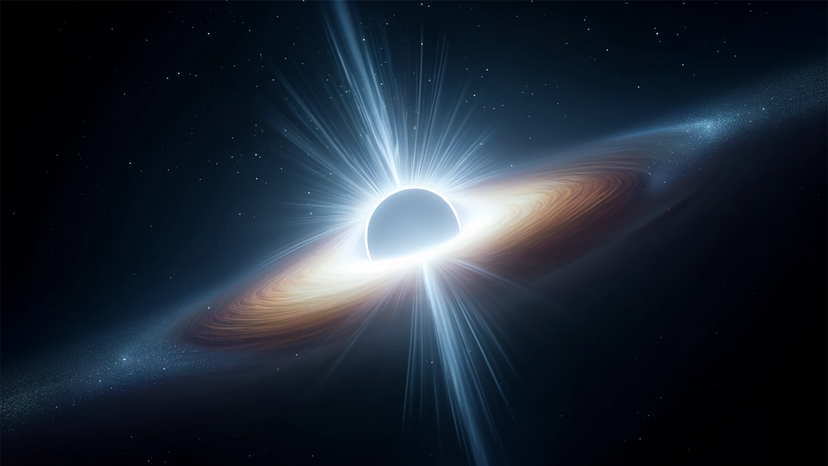The idea of a white hole is rooted in the Schwarzschild black hole solution, named after the German physicist and astronomer Karl Schwarzschild, who formulated it in response to Einstein's general theory of relativity.
When Schwarzschild was formulating equations that described black holes, he found that white holes could exist under the same laws of physics that govern black holes.
Extending his black hole solutions through a time reversal invariant transformed the black hole singularity into a white hole singularity — an area that would eject matter rather than draw it in.
In the context of physics, time reversal means imagining a scenario where time flows backward, reversing the sequence of events.
Schwarzschild's solution to Einstein's equations describes a point singularity surrounded by an event horizon.
Einstein's General Theory of Relativity
Einstein's general theory of relativity is a theory about gravity, describing it not as a force between objects, like Newton's theory, but as a curvature of space and time that mass and energy cause.
According to this theory of general relativity, planets, stars and other massive objects bend the space around them, and this bending of space is what we perceive as gravity.
Essentially, objects move along these bends in space, which is why, for example, the Earth orbits the sun.
What's a Point Singularity?
A point singularity is a location in space where certain quantities (like density or gravity) become infinitely large.
In simpler terms, it's like a point where everything we can conceive of in the entire universe — including the laws of physics themselves — breaks down because everything is crushed into an unimaginably tiny space.
Physicists often use this concept to describe the core of a black hole, where all its mass is concentrated at a single point.
What's an Event Horizon?
An event horizon is essentially a boundary around a black hole beyond which nothing can escape — not even light.
Think of it like a point of no return; once anything crosses this boundary, it's pulled into the black hole with no chance of getting out. This makes the event horizon the outermost layer of a black hole, defining the limit where its gravitational pull becomes too strong for anything to escape.
As Schwarzschild theorized, in the curious case of time reversal, such as in a white hole, this event horizon becomes a boundary from which matter and light can only escape, not be absorbed.
